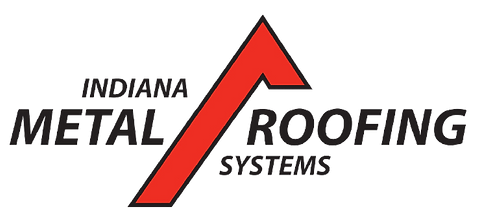After a storm passes, your roof may have taken on some damage that’s not immediately visible. Indiana Metal Roofing Systems advises homeowners to perform a thorough inspection to identify any issues and take proactive steps to prevent further damage. Here's a guide to help you spot storm damage and protect your home.

Identifying Types of Storm Damage
Storm damage comes in many forms, including high winds, hail, and heavy rain. Each type of weather event can cause different problems for your roof:
Wind Damage: High winds can lift shingles, cause curling at the edges, or remove them entirely. Inspect your roof for loose or missing shingles and look for granules in the gutters, which could indicate shingle wear.
Hail Damage: Hailstones can leave dents or cracks in shingles, which compromise their ability to protect your home from water. These indentations can allow moisture to seep into your roof, leading to rot and other issues.
After a storm, perform a visual inspection of your roof’s surface and gutters to check for debris, loose granules, or missing shingles.
Locating Damage on Your Roof
A walk around your home’s perimeter is a good way to identify visible storm damage. Look for:
Missing or damaged shingles.
Dents or cracks in the roof surface.
Sagging sections of the roof, which may indicate structural damage.
If you spot anything unusual, contact a roofing professional immediately. Early detection and repair can save you from costly damage down the line.
Checking for Missing Shingles
Missing shingles are a common result of storm damage and should be addressed quickly. Missing shingles leave your roof vulnerable to leaks and water damage. Regularly inspecting your roof, especially after a storm, ensures that missing shingles are replaced before they cause further issues.
If water leakage is present, it’s a strong indication that shingles are missing or damaged. Contact a roofing contractor to assess the damage and make necessary repairs.
Examining for Structural Deterioration
Structural deterioration can occur after a storm, especially around vulnerable areas like chimneys, skylights, and vents. During your inspection, check for:
Loose or damaged flashing around these areas.
Dents or cracks in roofing materials.
Loose nails around exposed wooden surfaces.
Addressing these issues promptly will prevent more severe damage in the future.
Checking for Leaks and Water Stains
Leaks and water stains are clear signs of roof damage. Check your attic and ceilings for water stains, discoloration, or mold. These signs indicate moisture buildup and potential roof leaks.
Water leaks lead to structural damage and mold growth so any sign of a leak should be taken seriously and repaired immediately.
Investigating for Signs of Animal Infestation
Storm damage can sometimes lead to animal infestations. Inspect your roof for signs such as:
Droppings, nests, or chewed materials around vents and chimneys.
Holes in the roof caused by animals seeking shelter after the storm.
If you detect any signs of animal activity, take immediate action to prevent further damage.
Assessing for Moss or Algae Growth
Moss or algae growth can indicate storm damage and should be addressed before it worsens. Moss can trap moisture, leading to roof degradation. To prevent moss and algae buildup:
Trim trees near the roof to reduce shade and debris.
Install zinc strips along the roof ridge to inhibit moss growth.
Regular roof maintenance helps keep your roof clear of unwanted plant growth and ensures proper drainage.
Frequently Asked Questions (FAQs)
1. How can I tell if my roof has storm damage?Check for missing or damaged shingles, dents, cracks, and water stains in your home’s attic and ceilings after a storm.
2. Why are missing shingles a serious issue?Missing shingles expose your roof to moisture, leading to leaks and water damage that can compromise your home’s structure.
3. What should I do if I find animal damage on my roof?Contact a professional roofer to assess and repair the damage. Addressing animal infestation quickly will prevent further roof issues.
4. How do I prevent moss from growing on my roof?Keep trees trimmed away from the roof and install zinc strips to prevent moss and algae growth.
5. When should I contact a professional roofer?Contact a roofer if you notice any signs of storm damage, including missing shingles, leaks, or structural deterioration.
Conclusion
Regular roof inspections are essential, especially after a storm, to detect potential issues early and prevent costly repairs. By identifying missing shingles, checking for structural deterioration, and addressing leaks or signs of animal infestation, you can keep your roof in good condition and protect your home. Indiana Metal Roofing Systems offers professional roof inspections and repairs to ensure your home remains secure and damage-free.
For more information on Innovations and Trends to Watch, click here.


Комментарии